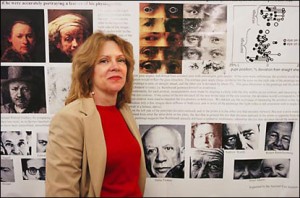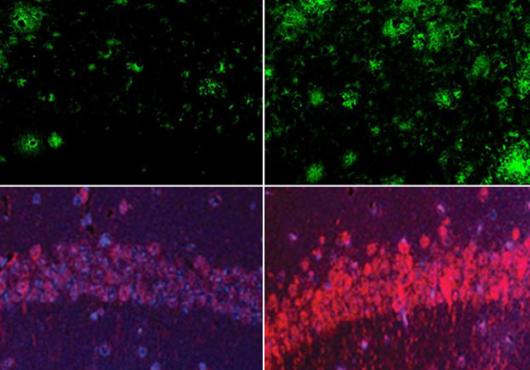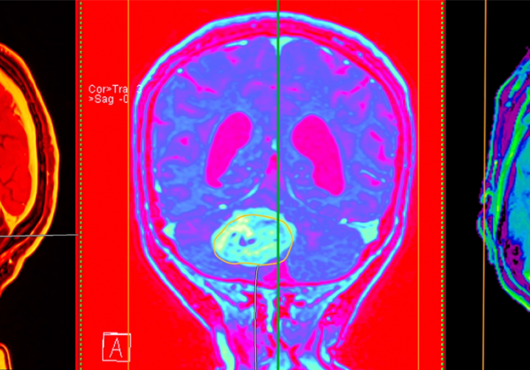One of the challenges of learning to paint the world is figuring out how to collapse the three dimensions of life onto a two-dimensional canvas. Part of that difficulty is technical; the evolving artist must grasp the subtleties of paint, stroke and composition in order to depict depth and space. Another hurdle is neurological; the artist must figure out how to undermine the stereoscopic accuracy of binocular vision. In short, the artist must learn to “see” three dimensions as two before he or she can render well real-world perspective.
Or perhaps, if you’re Edward Hopper, say, or Marc Chagall, Alexander Calder, or Pablo Picasso, you might rely on a natural aberration: a deficit in your stereoscopic vision.
Writing in the March issue of Psychological Science, Margaret Livingstone, HMS professor of neurobiology, and fellow researchers report that difficulties with stereopsis, the perception of depth generated by the brain from the sensory input of both eyes, are more common among artists than non-artists. Moreover, according to the team’s assessment of photographs of established artists, artists’ eyes often show misalignment, especially when compared to a control population of non-artists. Eye misalignment, a condition known as strabismus, contributes to poor stereopsis.

The unexpected advantage gained by overriding the brain’s tendency to layer depth into the tandem views captured by the eyes has long been recognized by teachers of art. Budding representational artists are often counseled to close one lid and peer through a single eye at the subject of their attention. Shuttering one eye, says Livingstone, defeats stereopsis and heightens visual cues for depth, such as shading and perspective.
In their two-part study, Livingstone; Bevil Conway, HMS lecturer on neurobiology and assistant professor of neuroscience at Wellesley College; and former Wellesley student Rosa Lafer-Sousa tested stereoscopic accuracy among 403 art students from two U.S. art schools noted for their emphasis on representational rendering. They then compared those results with the same measurements for 190 non-artist peers at two universities. Next, the investigators assessed stereopsis among established artists by adapting an eye alignment test and using it to measure alignment in photographed eyes. The researchers used photographs of notable artists drawn from respected archives, the National Gallery of Art and the Smithsonian American Art Museum. As a control, the team measured eye alignment in photographs of an age- and gender-matched group of U.S. congressional representatives.
The team not only found poorer stereo accuracy among the art students as compared to the non-artists, but also found a prevalence of eye misalignment among the established artists, indicating an increased incidence of strabismus.
Does all this mean poor eye alignment is necessary for artistic success? No, cautions Livingstone, “You can get the same effect simply by closing one eye. But, at a minimum, if poor stereopsis doesn’t contribute to artistic talent, it certainly doesn’t detract from it.”
For more information, students should contact Margaret Livingstone, professor of neurobiology, at margaret_livingstone@hms.harvard.edu.


